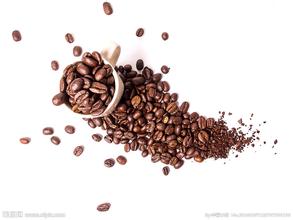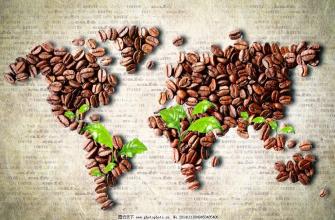What is the meaning of making coffee beans by washing? introduction to the method of flavor description and taste treatment
What is the meaning of making coffee beans by washing? introduction to the method of flavor description and taste treatment
Taste Classification Table of ▼ Coffee beans
Sour mocha, Hawaiian sour coffee, Mexico, Guatemala, Costa Rica high real estate, Gillimanjaro, Colombia, Zimbabwe, El Salvador, Western Hemisphere washable high-grade new beans.
Bitter Java, Mantenin, Bogota, Angola, Congo, Uganda all kinds of old beans.
Sweet Colombian metenin, Venezuelan old beans, Blue Mountains, Gillemazaro, Mocha, Guatemala, Mexico, Kenya, Santos, Haiti.
Neutral Brazil, El Salvador, lowland Costa Rica, Venezuela, Honduras, Cuba.
Mellow Colombian metenin, Mocha, Blue Mountains, Guatemala, Costa Rica.
Generally speaking, the sour coffee beans, especially the high-quality new beans, are best roasted shallower, while the bitter ones are less roasted, and then the sweet ones are mostly selected beans produced in the highland. Baking often constitutes the key to whether it can be tasted after it can be integrated into the soft bitterness. Neutral flavor, even if not highland coffee beans, but also need to have a stable quality of stable treatment. Show fragrant, mellow effect of coffee beans, [edit this paragraph] how to choose fresh coffee beans. When buying, pay attention to whether the color of the beans and the size of the particles are the same. Good coffee beans are shiny and have a strong aroma without being mixed with peculiar smell. No matter what kind of coffee beans, freshness is an important factor affecting the quality. When shopping, grab one or two coffee beans in your mouth and chew them with a crisp sound (indicating that the coffee is not damp) and the fragrance of the teeth and cheeks is the top grade, but it is best to squeeze it with your hands to feel whether it is solid, rather than buying crispy coffee. If the coffee bean has lost its fragrance or smells stale, it means that the coffee bean is no longer fresh and is not suitable for purchase.
Washed coffee is highly appraised by Europe and the United States and other places, mostly because its impurities and defective beans are less, the appearance of beans is more competitive, we are misled that "washing is delicious", but the appearance is not equal to the inside! Washed coffee and non-washed coffee have their own advantages and disadvantages.
Some laymen will think that the mocha Matali coffee beans in Yemen look small and have a high percentage of defective beans, more than 40% of which are impurities and defective beans, but they do not know that the acidity of his unique wine can not be replaced by other coffee. Therefore, it can be concluded that there is no absolute relationship between the advantages and disadvantages of coffee beans and refining method, semi-washing type is a mixture of drying type and water washing type, and it is also a compromise between the two. The practice is to wash the coffee beans in water, remove all the pulp of the coffee with a machine, dry it in the sun, and end it in use. What is different from the water washing refining method is that in this process, the coffee fruit is put into the fermentation tank, and the quality is more stable than the dry one. The Silado region of Brazil adopts the semi-washing refining method.

Important Notice :
前街咖啡 FrontStreet Coffee has moved to new addredd:
FrontStreet Coffee Address: 315,Donghua East Road,GuangZhou
Tel:020 38364473
- Prev

Description of Flavor of Coffee beans treated with Solar Water and Honey
Flavor description of coffee beans treated with sun water and honey this method is very common in Brazil. The natural washing method is very similar to the water washing method, except that the natural washing method uses a high-pressure washing machine to remove the mucous membrane of the coffee surface, thus skipping the fermentation process. Several raw coffee processing companies in Brazil and Colombia have applied for this method.
- Next

Video tutorial of Coffee Breaking skills-how to beat Milk foam with Coffee Machine Steam
Video tutorial on Coffee Breaking skills-how to beat the coffee machine steam and pour enough ice milk (about 10 degrees Celsius) into the flower cup. If you have plenty of time, put the flower cup in the refrigerator before using it to cool down. A cold flower cup will give you more time to prepare the milk and reduce the chance of the milk being boiled. In order to make the best foam, a portable liquid should be prepared
Related
- What is the meaning of lactic acid fermentation with coffee bean treatment?
- How to judge the state of foam by sound?
- How does the latte pull out the unicorn pattern? Come to get for a little trick to improve the flower pull!
- Will flower pulling affect the taste of the latte?
- Do you know the history of coffee?
- The difference between honey treatment and sun washing what is raisin honey treatment?
- What kind of milk can a novice use to make coffee foam to keep the foam longer? The correct method and skills of milking tutorial sharing
- Why do washed coffee beans taste sour? Flavor characteristics of washed Coffee
- Introduction to the skill of how to practice the size and height of water injection around the circle of hand-brewed coffee
- How do beginners practice coffee flower drawing from scratch?

